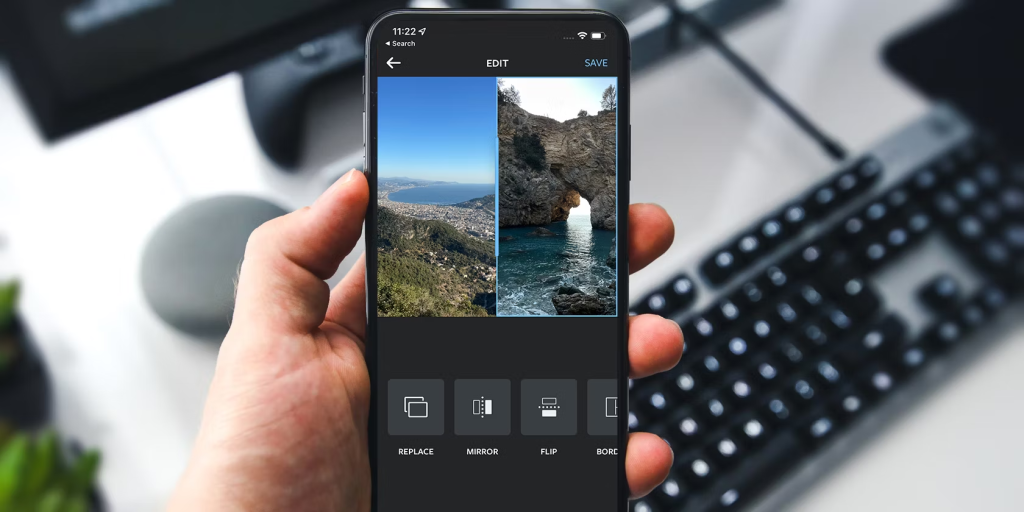When it comes to free and open-source packet analyzers, Wireshark is without a peer. It is able to monitor all incoming and outgoing network traffic between all machines. What this implies is that anyone with access to Wireshark may view unencrypted data on your network. Unfortunately, Android users will have to go elsewhere.
However, this does not exclude monitoring and packet capture from occurring on Android devices. Here are several excellent Wireshark replacements for Android that may be used to spy on network activity and grab packets.
Why do Most Network Sniffer Apps on Android Require Root Access?
You should note that most of the Android alternatives to Wireshark require root access if you want to capture packets with them. The cause for this is the monitor or promiscuous mode. When using a packet sniffer tool in promiscuous mode, you will be able to view each and every data packet being sent over the network. All communication can be monitored and analyzed if it is not encrypted individually.
While most Windows PCs need a dedicated WiFi adapter for promiscuous mode, certain macOS laptops may use their internal WiFi adapters for the purpose. In contrast, Android’s built-in WiFi adapter may operate in promiscuous mode.
However, most manufacturers disable this function to prevent it from being abused. To get around this, root privileges are required. In a nutshell, you will be limited to internal traffic monitoring if you do not have root access. The following apps are not accessible on the Google Play Store, and for good cause.
Wireshark Alternatives for Android
1. zAnti (Root)
zAnti is an all-inclusive penetration testing tool for Android, not simply a network sniffer. Complete network testing, along with a plethora of additional tests, is now possible with the click of a button.
zAnti’s features include but are not limited to, the ability to alter HTTP requests and answers, exploit routers, hijack HTTP sessions, swap out MAC addresses, and scan a target device for security flaws. zAnti also provides in-depth studies on how to strengthen your network’s defenses against potential assaults by pinpointing security holes within your existing infrastructure.
To function as intended, zAnti requires root access because it is a comprehensive penetration testing tool made for professionals and enterprises. In addition, it will alter a few SELinux configuration settings and switch your device to permissive mode so that the majority of its advanced capabilities can function as intended. If you do decide to use zAnti, it’s best to do it on a device that isn’t used for anything else.
2. cSploit (Root)
In the same way, as zAnti is a comprehensive and professional penetration testing tool for sophisticated users, so too is cSploit. In reality, cSploit is an offshoot of dSploit that was acquired by zAnti and incorporated into it. To put it simply, cSploit is Android’s version of Metasploit.
You may use cSploit to gather and view host system fingerprints, produce and forge TCP/UDP packets, map your local network, launch MITM (man in the middle) attacks, and more with its built-in traceroute capability. Network-centric cSploit features include session hijacking, DNS spoofing, connection breaking, traffic redirection, and packet capture (pcap).
As a result of cSploit’s integrated Metasploit framework RPCd, vulnerability scans may be performed, and shell consoles can be created on target computers. The app’s creator is also hard at work improving it; future goals include the ability to implant backdoors in susceptible systems and decipher WiFi passwords. A respectable replacement for Wireshark on Android.
Read More: Best Wireshark Alternatives for Android
3. Packet Capture
Full-featured penetration testing tools like zAnti and cSploit are available for Android, although their use is by no means universal. Packet Capture is a specialized program designed to intercept and log data sent across a network.
Not only can you record and capture packets using this program, but you can also use a man-in-the-middle (MITM) attack to decode SSL traffic. Packet Capture does not require root access to operate since it uses a local VPN to log all network activity. Packet Capture is an easy-to-use program for capturing network traffic.
To record and capture HTTPS traffic, you will be requested to install an SSL certificate at first launch. To proceed, select Install or Skip depending on your needs. Do mind that if you don’t install an SSL certificate, certain programs might not be able to connect to the internet when you are utilizing Packet Capture’s local VPN. However, the SSL certificate may be added at a later time using the settings menu.
Select the Play button found in the upper right corner of the home screen. By clicking this button, the local VPN will begin and all of your network activity will be logged and monitored automatically. You may install an SSL certificate now by going to Settings and choosing Status in the Certificate section if you didn’t do so when asked.
The software is free to download and use, but it does include advertisements.
4. Debug Proxy
Another Android app that can replace Wireshark as a traffic sniffer is Debug Proxy. Capturing traffic, monitoring all HTTP and HTTPS traffic, decrypting SSL communication with the MITM technique, and seeing live traffic are all possible with this tool, just as they would be with Packet Capture.
Debug Proxy’s strong points are its speed and responsiveness, thanks to its native-code packet capture and user-friendly interface. In addition to providing network protection for MITM attack vulnerabilities, web debugging, SSL monitoring, and more, Debug Proxy also provides access to other tools that allow you to control bandwidth, HTTP response, and test latency.
Again, you’ll be asked to add an SSL certificate. Decrypt SSL data by installing this. The ‘Play’ button, located in the top right corner of the main screen, may be tapped to begin recording. Debug Proxy is set up to intercept data from all applications by default. If you wish to record the traffic of a certain app, then touch on the ‘Android’ icon in the upper navigation bar and pick the app you want to track or monitor.
There are no intrusive advertisements or costs associated with downloading the core software. The premium edition costs $3 and unlocks additional capabilities including filtering system-wide capture and viewing request body and response data.
5. WiFinspect (Root)

WiFinspect is a potent and free alternative to popular network sniffers. Pcap analyzer, network sniffer, host discovery, port scanner, internal and external network vulnerability scanner, traceroute, ping, etc. are just some of the features that WiFinspect offers. WiFinspect is an Android software that can replace Packet Capture and Debug Proxy Wireshark, but it requires root access to use its full suite of functions.
WiFinspect is a great alternative to full-fledged penetration testing tools like cSploit and zAnti if you need software that does more than just capture packets.
Cost: Zero Dollars
6. tPacketCapture
tPacketCaputre provides one thing and that is capturing your network traffic, much like Packet Capture or Debug Proxy Wireshark replacement for Android apps. However, tPacketCapture stores its collected data as pcap files, while the other two programs do not.
The collected data may be viewed with packet-capturing software like Wireshark after the pcap file has been downloaded to a computer. Apart from that flaw, tPacketCapture performs admirably in its intended role. You should test the app if you can live with the restrictions.
The bare-bones software costs nothing, and it has no advertising. However, the pro version is required to record app-only traffic, and it costs approximately $8.5 (which is quite a little).
7. Nmap
Android and PC users alike may benefit from Nmap, an open-source network scanning tool. While it is compatible with both rooted and unrooted Android devices, the features available on a rooted Android smartphone are more extensive.
The only catch is that, unlike the other applications on this list, you won’t be able to get Nmap from the Google Play store or even the developers’ websites. Instead, you’ll need to assemble it by issuing a few instructions via ADB or a third-party terminal emulator like Su/Root Command. If you see a permission refused message during setup, check to see if the full Nmap directory has been granted permission.
8. Android tcpdump (Root)
While not quite user-friendly, Android tcpdump is nonetheless rather amazing because it is a command-line tool for Android phones. Linux users will feel perfectly at home because they are familiar with the command line and the program tcpdump.
You’ll need terminal access and to have rooted the phone. There are a variety of terminal emulators available in the App Store for this purpose.
Read More: How to Logout of Instagram on Your Phone and Computer?
9. NetMonster
By scanning local networks and mobile towers, NetMonster can assist you in dealing with unauthorized transmissions. The data it gathers can include the following: CI, eNB, CID, TAC, PCI, RSSI, RSRP, RSRQ, SNR, CQI, TA, EARFCN, and Band+. All this data may be put to use in penetration tests and other forms of network inspection.
Without anyone’s knowledge, NetMonster will steal all of their data from the local area network. There is no advertising and no cost to use NetMonster. Just put it to use and start accumulating and analyzing information.
Wrapping Up: Wireshark Alternatives for Android
The following are some excellent alternatives to the popular Android app Wireshark. When it comes to man-in-the-middle attacks and packet capture, zAnti and cSploit are the two most similar tools. However, the Netcut software is worth considering if all you want to do is prevent someone from accessing your WiFi. On the other hand, root privileges are needed.
